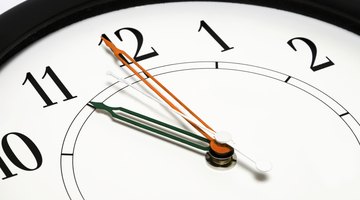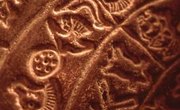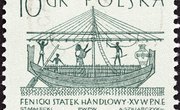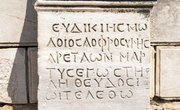Invention of Arabic Numbers
Arabic numerals are the 10 digits from zero to nine that form the basis of Western mathematics. Despite their name, Arabic numbers descend from a numeral system developed by ancient Indian mathematicians. Persians and Arab mathematicians in India used the numerals widely, and they were eventually adopted by Arabs in further western regions before being taken on in Europe. The modern Arabic number system has had great influence across the globe for a multitude of reasons.
These Arabic numbers in the Arabic numeral system allow for place-values to be shown for counted items in written language, spanning right to left with lesser to greater amounts. In the Arab world, Al-Andalus was a major place for innovation and invention, possibly leading to this numeral system. Although we may not see our modern numbers as Hindu numerals, they do have an important history to pay attention to from the Middle Ages.
Early History
The nine digits used today evolved from the Brahmi numerals, an indigenous Indian numeral system from the third century B.C. Buddhist inscriptions from that time period show the use of symbols corresponding to the numbers one, four and six. By the middle of the second century B.C., Babylonian mathematicians had developed a numeral system with 60 as its base. It took until the ninth century A.D. for zero to appear in academic inscriptions. However, archaeological evidence unearthed in central India and Iran indicates the use of all nine numerals as far back as the seventh century A.D.
Wider Adoption
Between the years 825 and 830, Persian mathematician Al-Khwarizmi and Arab mathematician Al-Kindi each wrote separate books on the principles of using Arabic numerals. These books led to the diffusion of the numbers into the Middle East and parts of the West. In the 10th century, Middle Eastern scholars used the numerals to develop fractions and percentages. Later that same century, a mathematician called Sind ibn Ali introduced the decimal point and later the decimal system. With this came a new way of writing numbers called "sand-table." Eventually, sand-table numerals took the shape of the written numbers used today.
European Expansion
The first mention of Arabic numbers in the West is found in the "Codex Vigilanus," a historical account of Hispania published in 976. Pope Sylvester II began to spread knowledge of Arabic numerals throughout Europe beginning in the 980s. As a student, Sylvester studied a form of mathematics and requested that Italian and Algerian scholars translate some of the earlier mathematical texts into common European languages. This was accomplished more fully in 1202 with a book by Leonardo of Pisa called "Liber Abaci."
Eventual Acceptance
The acceptance of Hindu-Arabic numerals in Europe was precipitated by the invention of the printing press in the 15th century. Other major events in Britain helped to bring greater awareness of math. For example, an inscription on the bell tower of Heathfield Church in Sussex in 1445, and a 1470 inscription on the tomb of the Earl of Huntly in Scotland, show the use of Arabic numbers by the powerful and elite. By the mid-16th century, Arabic numerals were in common use throughout most of Europe. Roman numerals were also widely used, but with the addition of Arabic numerals, society was able to have options for their presentations of numbers in written language. This system of numbers allowed for other mathematical writing practices to take place, like positional notation, placeholder equations, and algorithm problem solving.
Other Numeral Systems
Fibonacci also introduced the world to a numeral system of his own design named the Fibonacci sequence. Abacuses were also used as a system of counting in the Middle English and Latin history of numbers and numerals within the 12th century and 13th century. While different countries and origins, like Greek, Islamic, Chinese, Egyptian, Muslim, and Hebrew, used different counting systems, many held common numeral beliefs in various forms.
Related Articles
References
Writer Bio
Jeremy Bradley works in the fields of educational consultancy and business administration. He holds a Master of Business Administration degree.










